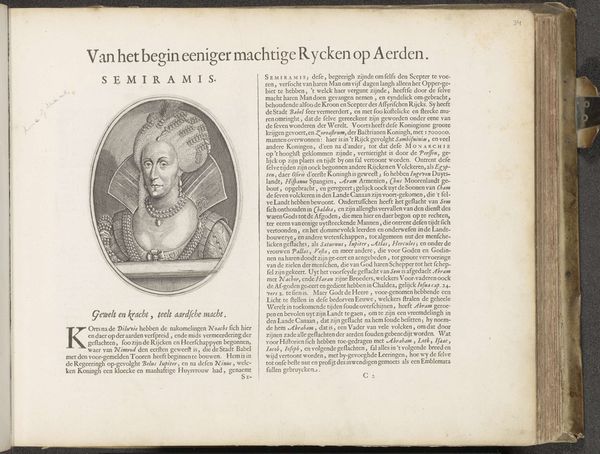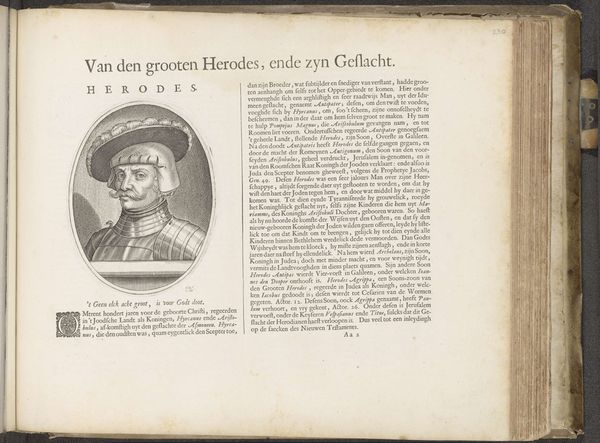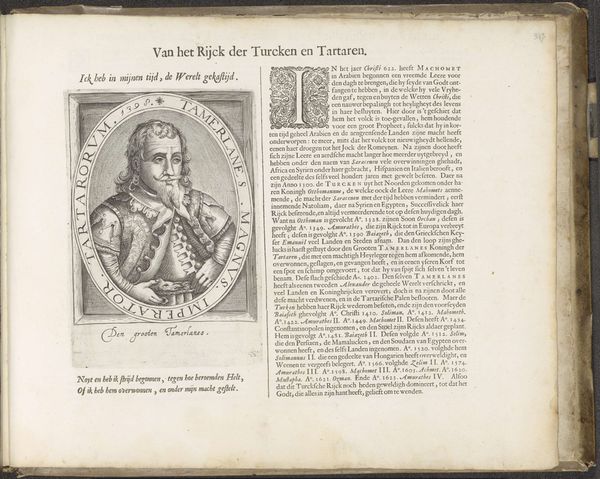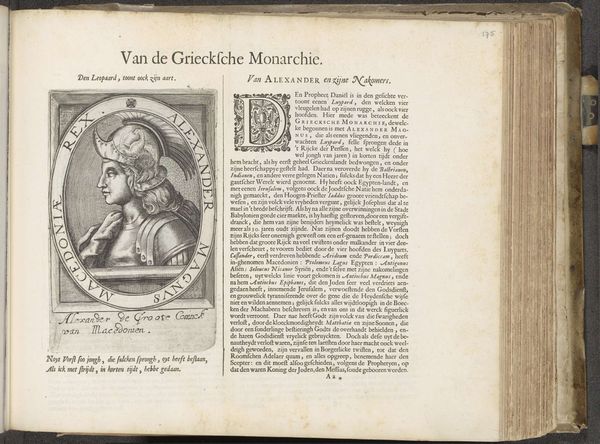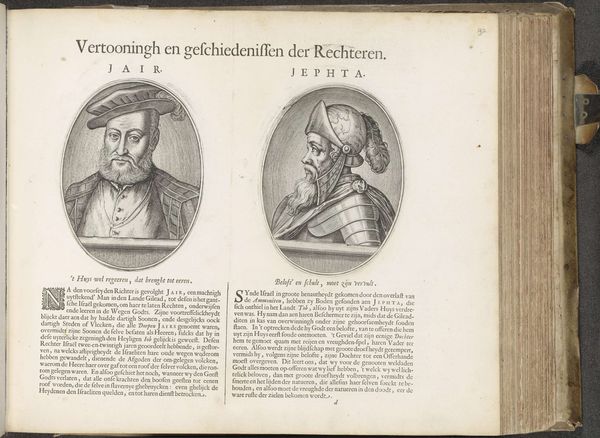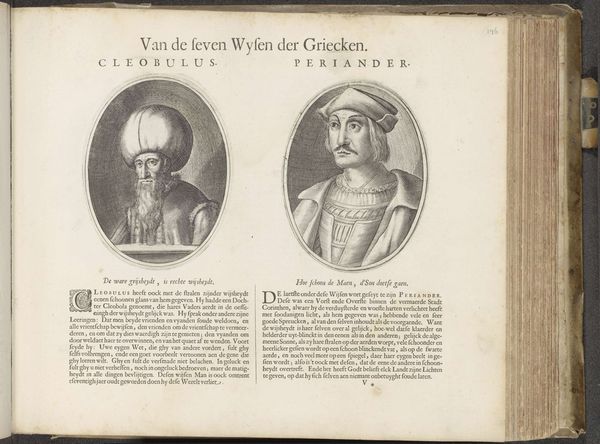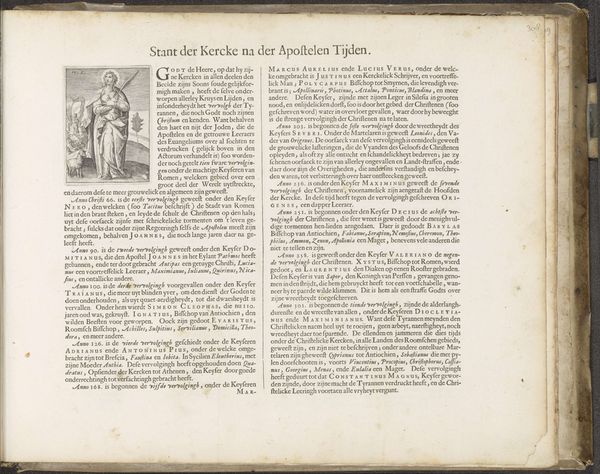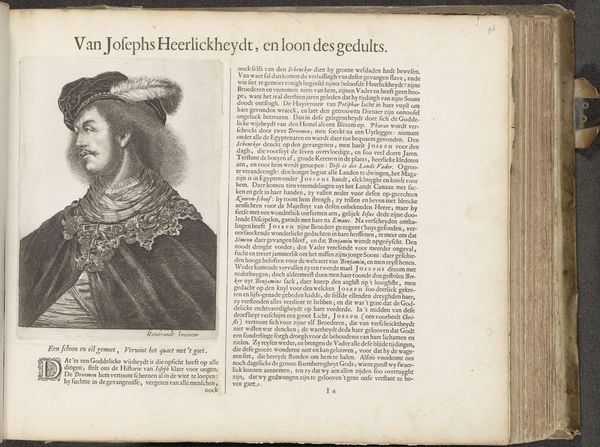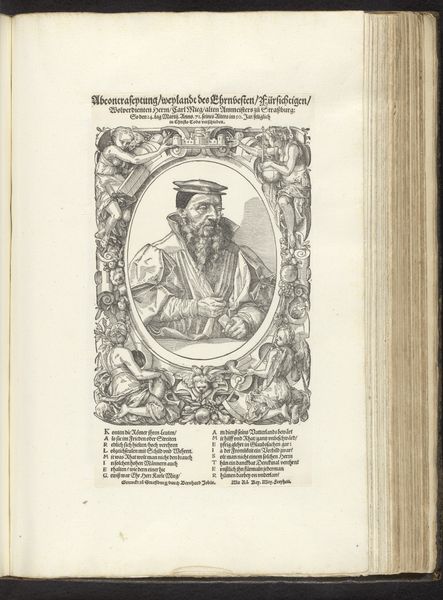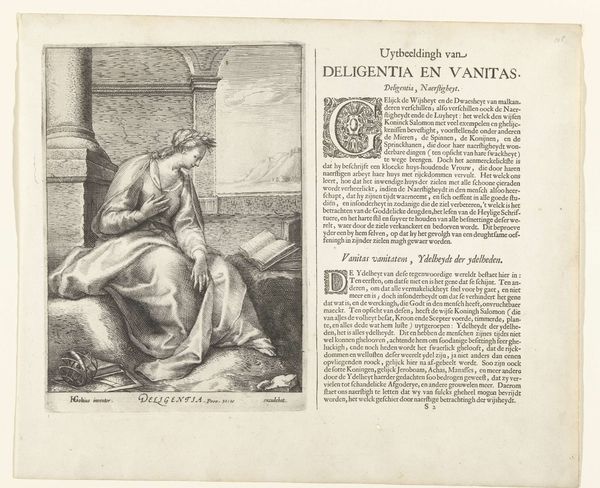
print, engraving
#
portrait
# print
#
coloured pencil
#
ancient-mediterranean
#
islamic-art
#
history-painting
#
engraving
Dimensions: height 141 mm, width 108 mm, height 294 mm, width 370 mm
Copyright: Rijks Museum: Open Domain
Editor: We’re looking at a print here titled "Portret van de koning Nebukadnezar II," attributed to an anonymous artist, possibly made between 1610 and 1654. It's currently housed in the Rijksmuseum. The portrait has an interesting texture from the engraving technique, and King Nebuchadnezzar II seems like a powerful, imposing figure. What do you see in this piece, from a historical perspective? Curator: Beyond the immediate visual impression, I see a potent example of how historical figures are continually reimagined through the lens of contemporary socio-political needs. This print, created long after Nebuchadnezzar's reign, doesn’t just depict a Babylonian king; it reflects the early modern European understanding – and, arguably, manipulation – of ancient power. Note the text accompanying the image: "Van d'Assyrische Monarchie," framing Nebuchadnezzar within a specific lineage of rulers. How does this framing, placing him within an Assyrian monarchic lineage, influence its reception by contemporary audiences? Editor: That's fascinating! I hadn’t considered how much the historical context of *this* artwork itself influences how we interpret Nebuchadnezzar, not the other way around. Are you suggesting that it uses Nebuchadnezzar to perhaps comment on contemporary European monarchies? Curator: Precisely! Consider the power dynamics between the Dutch Republic, where this print likely originated, and other European monarchies at the time. The act of representing, of literally re-presenting, a powerful ancient ruler like Nebuchadnezzar, offers a subtle yet compelling way to discuss power, authority, and even tyranny, within their own society. The choice of medium - a widely reproducible print - suggests the intended distribution and widespread engagement with such ideas. It encourages critical thinking about what constituted “good” or “bad” rulership. Editor: So it's less about accurately portraying Nebuchadnezzar and more about using his image as a vehicle for contemporary political commentary. Curator: Exactly! It demonstrates how history itself is a constructed narrative, continually reshaped by the socio-political climate of the present. This print, therefore, is an object which exists at the intersection of art, power, and public perception. Editor: This has totally changed my perspective. I initially saw just a portrait, but now I understand it's part of a larger cultural conversation about power and authority. Curator: Indeed. Examining art through a historical lens reveals how artworks are actively participating in and shaping their own cultural landscape.
Comments
No comments
Be the first to comment and join the conversation on the ultimate creative platform.
